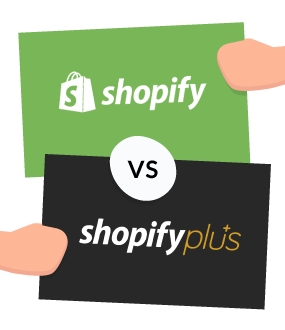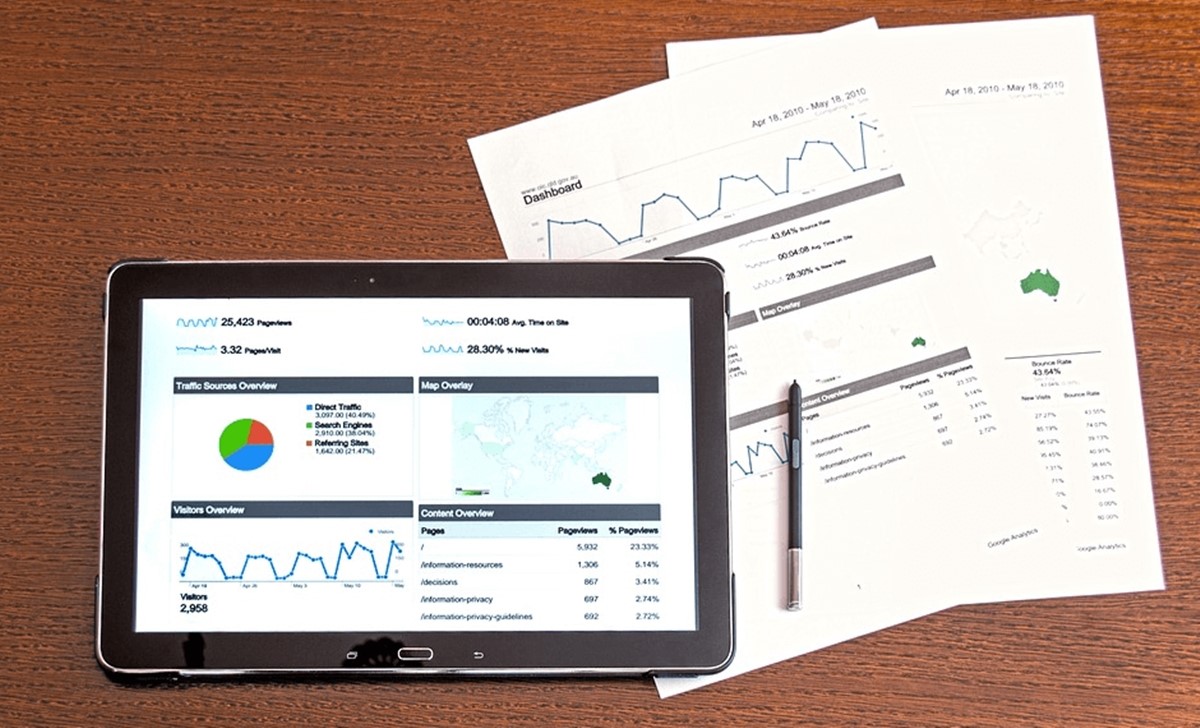You may be well-versed in the Shopify and Shopify Plus platforms before launching your online business. However, you may not be aware of the distinction between Shopify and Shopify Plus.
With our article, you will find a straightforward solution. We will discuss an overview of Shopify and Shopify Plus, their differences, and who should utilize Shopify versus Shopify Plus. Please do not leave, as we will immediately proceed to the specifics. Let's get started.
What Is The Difference Between Shopify And Shopify Plus?

Shopify Design vs Shopify Plus Design
Shopify and Shopify Plus offer more than 60 themes to choose from when establishing an online store, 10 of which are free and 59 of which are available for a fee ranging from $140 to $180.
In addition, themes are available in a large number of languages, including English, Spanish, French, German, Italian, Japanese, and Brazilian Portuguese. Therefore, launching an online store for a country-specific audience is incredibly simple.
In addition, Shopify's theme store allows browsing, previewing, and categorical sorting.
The Shopify editor allows for basic customization. After adding your items, you can choose where they will be displayed and organize them into category pages.
For greater control, basic coding skills are essential. In this instance, you should consider Shopify's Liquid theme language. You can modify the appearance of your theme with Liquid by writing lines of code. However, if you do not know how to code, please do not panic because there are numerous available guides that can assist you.
So far, it is clear that Shopify Plus is intended for enterprises. Therefore, if you are using Shopify Plus, you most likely already have a website.
Shopify Plus provides you with a dedicated launch manager whose job it is to ensure that your website can be fully integrated with Shopify. They will write lines of code and get your Shopify custom theme up and running.
Another notable distinction between Shopify and Shopify Plus is the ability to customize the checkout page. Shopify cannot assist you in this regard, whereas Shopify Plus can.
Shopify Plus offers superior design flexibility overall. Even though both Shopify and Shopify Plus offer more than sixty themes, Shopify Plus offers more. You can have both your launch manager and your checkout page edited.
Shopify Features vs Shopify Plus Features
eCommerce capabilities differentiate Shopify and Shopify Plus. Let's examine several key features of both platforms, followed by two that are exclusive to Shopify Plus.
Shopify Features
- Multi-Channel Integration The term may sound complex to you, but its meaning is very simple. Multi-Channel Integration implies the ability to sell many different places. Shopify allows you to sell your items directly on marketplaces, such as Amazon and eBay and social media like Facebook and Instagram.
If a shopper can make a purchase without leaving their current platform, the likelihood of them placing an order is very high. You have the chance to diversify your revenue streams and acquire new customers who have never visited your website.
- Abandoned Cart Recovery There are cases when a customer visits your online store, add one or more items to their cart, but then exits without checking out. This built-in feature means that Shopify will send them an automated email on your behalf as a follow-up to see whether they still want to buy your item.
According to studies, abandoned cart emails can recover up to 25 percent of nearly placed orders.
- Multi-Currency Selling If you use Shopify’s payment processor, Shopify Payments, your online shop will automatically change the currency displayed for your items depending on the location of the customer.
Your prices will alter following current exchange rates. It will be an ideal option for you if you intend to sell your products to people all over the world. Shopify supports the currencies including GBP, EUR, USD, CAD, AUD, HKD, NZD, JPY, and SGD.
Shopify Plus Features
- Shopify Flow There is an idiom that says first impressions are most lasting. Shopify Flow enables you to tailor that first impression exclusively to your customers. Once they have signed up to your site, you can track their orders and modify your homepage to suit the items that they may have an intention to purchase.
- Script Editor In addition to granting you greater control over shipping, Shopify enables you to make scripts for line items and payment methods. The task of customizing every aspect of your online store down to the tiniest detail is now a piece of cake and gives you complete control.
In conclusion, Shopify Plus has more exceptional eCommerce features than Shopify. While Shopify offers numerous sales tools and features, many of them are comparable to Shopify Plus. However, Shopify lacks the sophistication of Shopify Plus's tools. The script editor and Shopify Flow offer more sophisticated services than Shopify's tools.
Shopify vs Shopify Plus: Help & Support {#shopify-vs-shopify-plus-help-support}
Shopify offers excellent customer service via phone, email, and live chat around the clock. Additionally, you have the option to search through its Help Center's guides.
Shopify's help center should be your first stop if you encounter any issues.
Regarding Shopify Plus, you will receive devoted and individual support. It can be extremely important for large corporations.
Initially, you can hire a launch manager who will help you get started. They can assist you in integrating your existing website with Shopify. Then, an MSM (merchant success manager) will be assigned to help your brand flourish. It can instruct you on how to use Shopify Plus, keep you abreast of industry trends, and offer strategic guidance.
Concerning Help and Support, Shopify lags behind Shopify Plus. With its personalized, hands-on support, Shopify Plus provides you with a dedicated launch manager to help you get started. It also provides a merchant support manager to aid in the expansion of your business.
Shopify Analytic vs Shopify Plus Analytic

Shopify is equipped with its own analytics dashboard. You can view an overview of your online store's sales and custom reports from this page. In addition, there is a live view that displays data minute-by-minute. Thanks to this analytics dashboard, nearly all eCommerce businesses can gain all the necessary insight.
Shopify Plus goes one step further than this. Shopify's analytics dashboard contains all data insights; however, Shopify Plus partners with industry-leading analytics companies, such as Glew and Looker, to provide you with current, expert data and insight. The feature is essential for eCommerce businesses, as it allows them to obtain the necessary information to advance.
Again, Shopify Plus is superior to Shopify. Shopify includes an analytics tool that allows you to track your store's data on a regular basis. Shopify Plus takes this functionality to the next level with its advanced integrations. Shopify provides exceptional insight, while Shopify Plus provides expert data and information.
Shopify Pricing vs Shopify Plus Pricing
Shopify offers three primary pricing plans: Basic Shopify for $29 per month, Shopify for $79 per month, and Advanced Shopify for $299 per month. All of these plans provide you with essential features such as multi-channel integration and cart abandonment, but there are significant differences between them. If producing and selling gift cards is essential to your business, you will need either the Shopify or Advanced Shopify plan.
Advanced Shopify provides you with additional insight. You can view professional reports and shipping rates calculated by a third party. If you intend to expand rapidly, you can consider the two characteristics.
Shopify provides you with a 14-day free trial, so if you're not satisfied with what you've experienced within two weeks, you can simply abandon the investment.
Shopify Plus pricing is somewhat obscure. You may need to contact Shopify Plus directly for a quote. Here, you can describe your business model, monthly revenue, and marketing needs in order to negotiate a fair price.
If your monthly sales range from $0 to $800,000, Shopify Plus plans may cost you around $2,000 per month. It can range from $0 to $40,000, which is the maximum price for Shopify Plus.
The transaction fees for Shopify and Shopify Plus are identical. Shopify charges a flat rate per transaction. The fees for Shopify Plus are negotiable. Approximately 1.6% plus 30 cents will be deducted per transaction.
3D Secure, an indispensable feature offered by both Shopify and Shopify Plus, protects merchants from credit card fraud when processing transactions. Therefore, if you ever process a risky payment, the bank should be accountable, not you. Shopify's transaction fees vary depending on the plan you choose.
Shopify wins because Shopify Plus's pricing is more expensive and less transparent than that of Shopify's plans. You may request a quote for Shopify Plus if it is appropriate for your business. In the meantime, Shopify's pricing plans are available to view and test for free for 14 days.
Who Should Use Shopify vs Shopify Plus

The major kinds of businesses that ought to use Shopify Plus are large ventures, wholesalers, and enterprise-level eCommerce shops. Shopify is for small and mid-level businesses.
The Shopify Plus software's power and reliability make it practical for businesses who would otherwise need to employ technical personnel.
In some noteworthy cases, using Shopify Plus is a clear advantage. For instance, a spike in sales in the holidays may lead to a crash to your online store or system if you are not well- prepared. It can help you a great deal by manipulating the incidents like this, so you do not have to worry.
Those are the differences between Shopify and Shopify Plus. Which platform do you think is right for your business?
Thank you for reading



Comments
Post a Comment